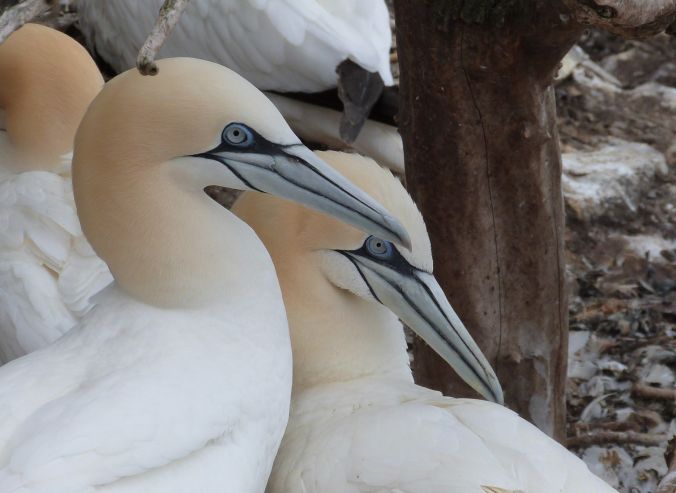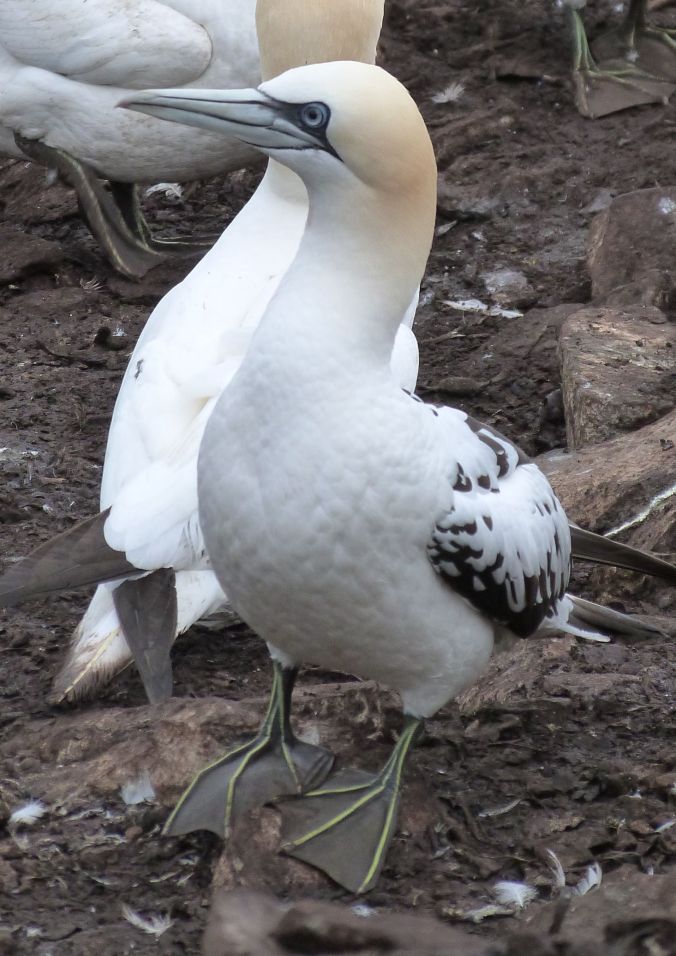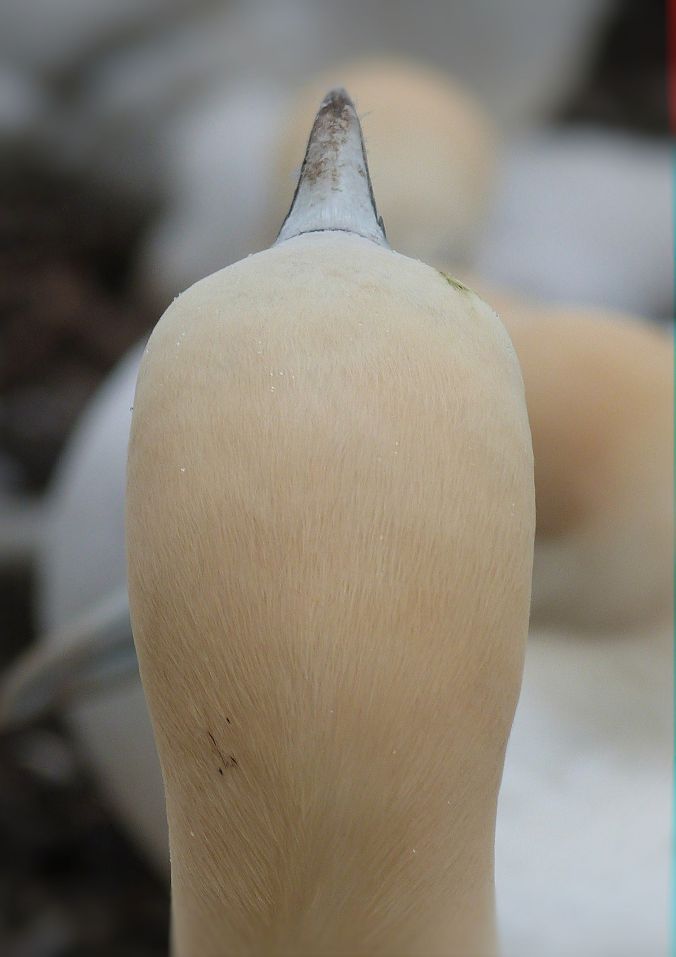In humans it is the combination of X and Y chromosomes that determine sex; females have two of the same sex chromosomes, XX, and males have two distinct sex chromosomes, XY. In birds it is Z and W chromosomes which determine sex but with the assignment the other way round to humans, females contain ZW sex chromosomes and males contain ZZ. It is the presence of these Z and W chromosomes in breast feathers, collected last summer, which I have been trying to determine these last few weeks at the NBAF Facility in Sheffield.
Working in a lab is a completely new experience for me and the complete antithesis of working on Bass Rock. The lab, as you would expect, is spotlessly clean, tidy, calm and quiet. Bass is noisy, smelly, dirty (filthy if it’s been raining) and a little bit crazy!
-

-
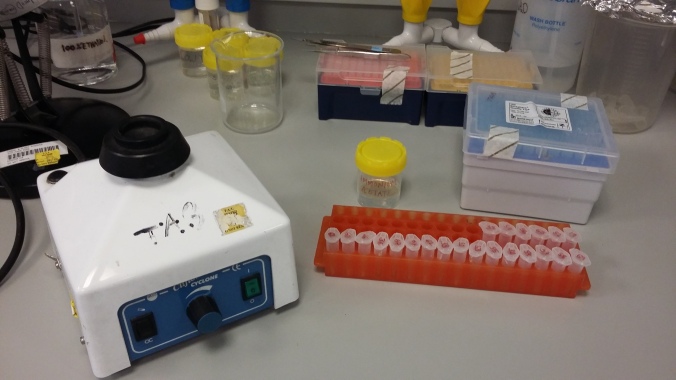
-
These two work environments could not be more different from each other
The process to get from feather to sex probably takes 3-4 days and involves 4 stages which I’ll attempt to outline below.
Firstly the DNA needs to be extracted from the feather. The end of the feather, or quill, which was attached to the bird, needs to be cut off and cut into tiny fragments. Working with small breast feathers requires a modicum of patience as small fragments of feather have a frustrating habit of pinging off if you fail to hold them down adequately!

Ready to start prepping the feather for DNA extraction

Lots of concentration required
Preparing feathers for DNA extraction.
A process involving the use of ammonia acetate is then carried out to leave you with a miniscule (so small you can’t see it with the naked eye) pellet of DNA in the bottom of a 1.5ml tube. To be able to assess and use the DNA it needs to be in liquid form and so is then dissolved in a buffer solution. There is a substantial difference in the quantity of DNA that you can extract from feathers and bird blood. This is because bird blood is nucleated and so contains much more DNA. The photo below of two 1.5ml tubes shows the difference.
-

-
DNA from a feather (left) and blood (right) – click on the photo for a closer look
The quantity of DNA in the sample can then be assessed using an agarose gel.
-
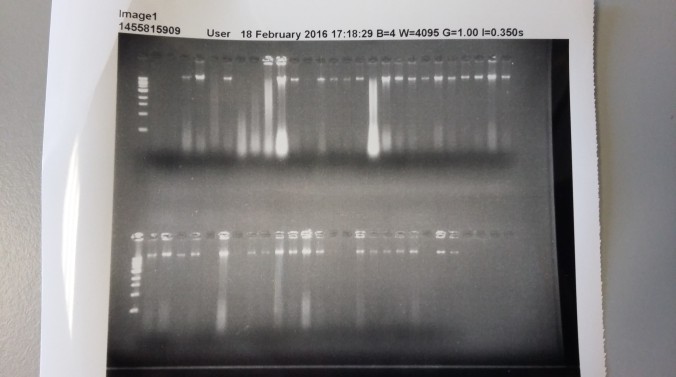
-
Output from an agarose gel
The next step is to run a PCR , or polymerase chain reaction, on the sample to see if it contains two identical Z alleles (male) or a Z and W allele (female). The Z and W alleles differ in size and this allows us to distinguish between them. A primer set that targets the Z/W alleles and an enzyme (Taq DNA polymerase) are added to the sample followed by a process of heating and cooling to three different temperatures. This allows the Z or W alleles to be identified and replicated millions of times. The Z and W alleles are then separated based on size using a DNA Analyser. The use of PCR in this technique means that even with a very small quantity of starting DNA, you can still get a sexing result.
-
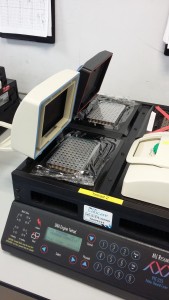
-
The PCR machine with samples loaded
Then it’s time for the exciting bit, it’s time to put the samples into the DNA Analyser and see whether my pipetting skills have been up to scratch and if ZZ or ZW alleles have been identified from the samples.
So after much pipetting and spinning down I have managed to successfully sex all 40 of the birds tested, which is a third of the birds we tagged last summer. That might not sound very many but I’m quite pleased with how it’s gone especially given how much more difficult it is to extract DNA from feathers than blood. Apparently mouth swabs are also pretty reliable but we’ll have to see whether we’re brave enough to get any of those!
-
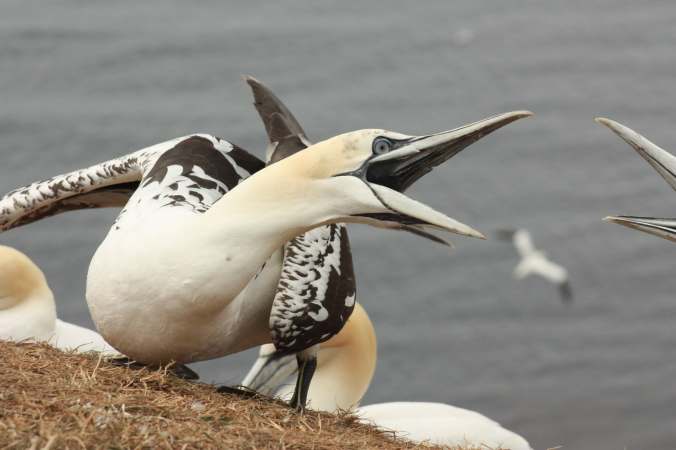
-
Would you be brave enough to take a mouth swab? Photo credit: Jana Jeglinski
Finally I’d just like to say a huge thank you to Gavin Horsburgh and Deborah Dawson at the NBAF Facility (NERC Biomolecular Analysis Facility) who have both been incredibly patient with me and taken me through every step. Hopefully when I go back next year I’ll be a little more self-sufficient now I know what’s in store!










